About Pigtail fiber optic cable, What would happen if you had the best fiber optic bandwidth but had connection problems from the installation stage?
You would experience high attenuation, high return loss, and terrible communication.
Pigtail fiber optic cable offers the right fix for excellent connectivity between two devices or cables. We’ll demystify why you need fiber optic pigtails.
What is Pigtail in Fiber Optics?
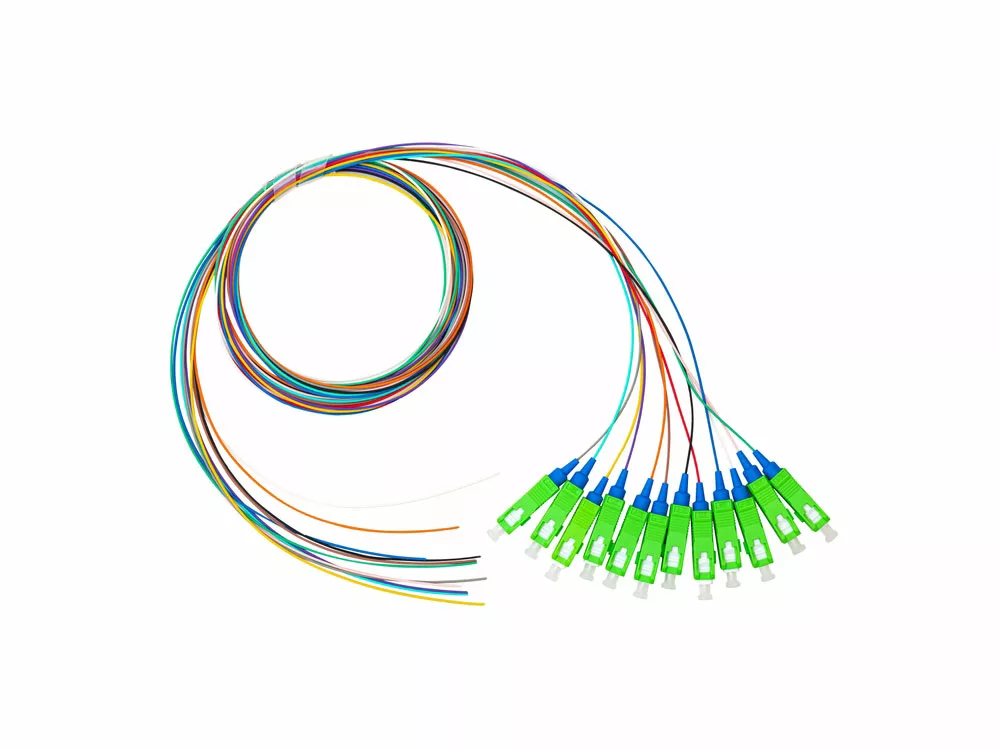
Color-coded fiber optic pigtail
Think of an electrical wire.
When you have two short electrical wires, you can connect them to make a longer wire. That’s how you pigtail electrical wire to increase distance and maintain connectivity.
Using the same concept, a pigtail in fiber optics is a fiber optic cable that comes terminated on one end and remains open-ended on the other.
Pigtail fiber optic cables are typically pre-equipped/terminated with factory pigtail wire connectors. The factory-terminated end connects to equipment, leaving the exposed bit free to be fused or spliced with other fiber optic cables.
What Is A Pigtail Cable Used For?
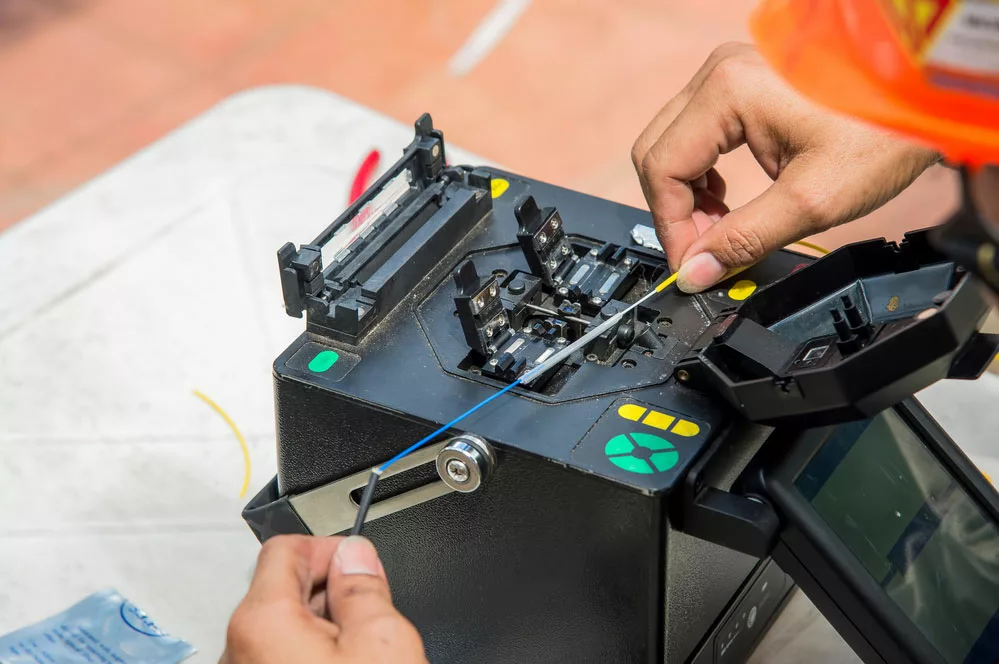
Splicing fiber optics
A pigtail cable is a connection device used in access equipment. It is used to lengthen connections between termination points.
In fiber optics, pigtails feature heavily in devices such as distribution and fiber terminal boxes. You’ll also see it in optical distribution frames used to provide a connection between communication centers.
Pigtail fiber optic cables are the basis of the following applications.
- Optical fiber communication systems, fiber access, and data transmission
- Lossless optical fiber cable television
- Local area network (LAN) connections
- Test equipment
- Optical fiber sensors
- Serial servers
- Home fiber
- Replacing and interconnecting with copper cables in FTTX(Fiber to the ‘x’) applications
- Telecommunications networks
- Pre-termination installation
Types of Fiber Pigtail
You can categorize fiber pigtails by connectors, application, fiber count, or fiber type.
Fiber Type
In a wider sense, fiber type is the broadest categorization of fiber pigtail.
Single-mode fiber pigtails come in 9/125-micron cables. You’ll find them in yellow, terminated with single-mode fiber connectors.
Single-mode indoor fiber optic pigtails form the backbone connection infrastructure between the buildings more than 100 meters apart.
On the other hand, multimode fiber pigtail comes in 62.5/125-micron or 50/125-micron cables.
Modern multimode fiber pigtail comes in orange, terminated with multimode connectors. Multimode indoor fiber optic pigtails are suited for short-distance connections.
Fiber Optic Connector Types
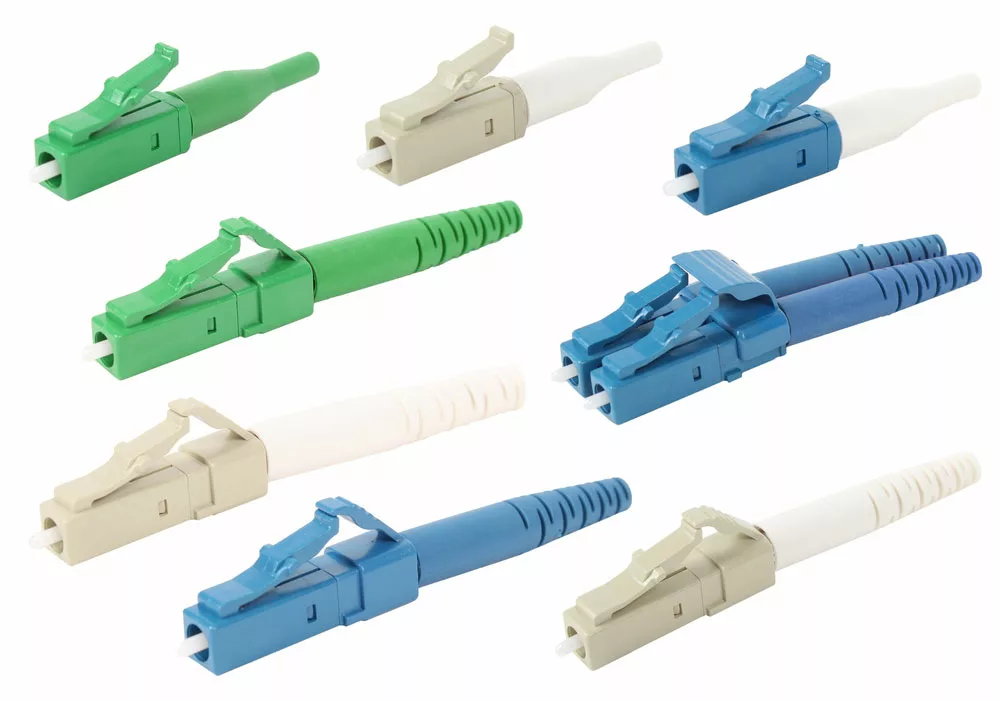
Different fiber optic pigtail connectors
Each connector type has a specific use that might give it an advantage over others. Connector types include SC, ST, LC, FC, MU, and MT-RJ.
Fiber Strand Count
Fiber optic pigtails also fall into categories according to strand count.
Strand count determines where the pigtail is most applicable in connection and interconnection. You’ll find strand counts 1, 2, 4, 6, 8, 12, 24, and 48.
Simplex fiber pigtails have one strand and a connector, while duplex has two strands and two connectors.
The strand count makes a difference when making fiber patch cords.
Application
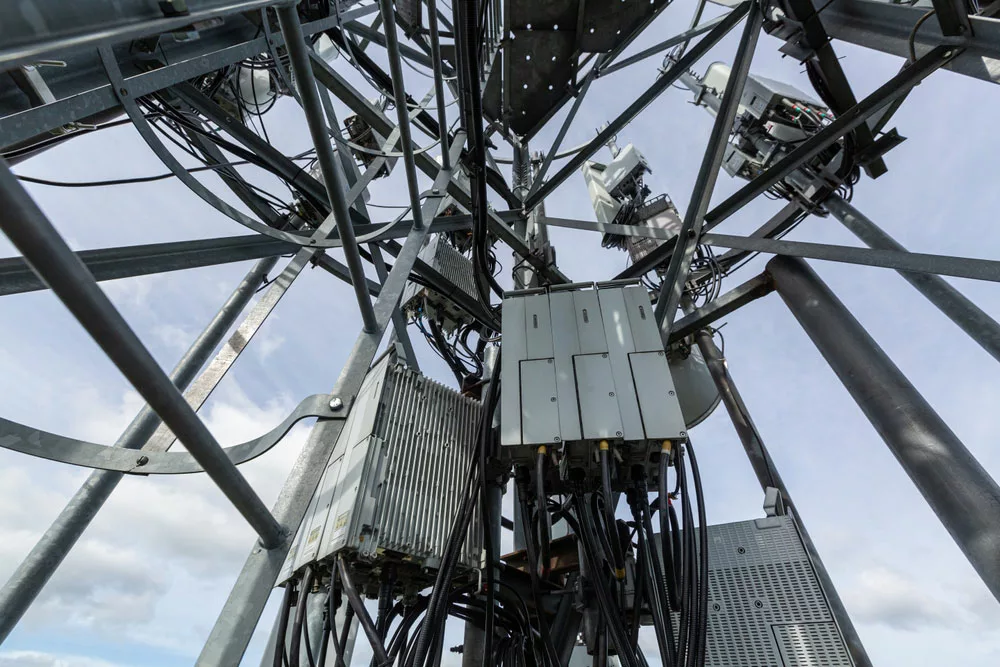
Telecommunication tower with fiber optic cables and equipment
Categorizing fiber optic pigtail by application defines what you can do with a certain cable type.
Waterproof fiber optic pigtail is hardy and mostly used in damage-prone applications.
Their construction consists of stainless steel and polyethylene(PE) covering. Cable TV and communication towers use waterproof fiber optic pigtails.
Armored fiber optic pigtail is hardier, made with stainless steel cover protecting the inner layer. These cables are common in underground works with a rodent and construction damage risk.
How To Choose Fiber Optic Pigtails
Choosing fiber optic pigtails is about finding cables that ensure minimal loss, pinpoint connection, and durability for a great price.
However, stick to these four basics when selecting the pigtails: Fiber optic type, application, fiber cable size, and connector type.
Cable Length
Pick a fiber pigtail with the right length for long-distance or short-distance usage. The distance between connection points or equipment should guide you when choosing based on length.
Connector Type
Each type of connector has an application where you can utilize it best.
- SC(stick-and-click) fiber optic pigtail is preferred for its affordability, accuracy, and ease of installation.
- ST(straight tip) connectors feature prominently in medical devices, sensors, and older telecommunication tech.
- FC connectors are equipped to handle constant high vibration, while LC connectors are suited for quick installation in high-density areas.
- The MT-RJ connectors are smaller to enable quicker Fiber-to-the-Desk applications.
Insertion and Return Loss Rates
Low insertion loss provides a stronger signal, while high return loss means you experience less signal reflection.
High Tensile Strength
Choose a fiber optic pigtail with high tensile strength enough to withstand more force per square inch during installation.
We’ve outlined more specifications that should guide your choices.
Fiber Pigtail Specifications
Fiber pigtail specifications help you get the exact cable to get accurate connectivity.
| Specification | Detail |
| Type | Single mode/Multimode |
| Core size(in microns) | 9/125 for single mode and 62.5/125 or 50/125 for multimode |
| Connector type | SC, LC, ST, MU, and MT-RJCould be male or female |
| Length | In meters |
| Insertion Loss (measured in dB) | How much light is lost between the connector and the receiver end |
| Return Loss (measured in dB) | How much light is reflected between the connector and the receiver |
| Optimum temperature range | Safe operating temperature for the fiber optic pigtail, in degrees Celsius |
| Tensile strength | Fiber can withstand 2 million pounds per square inch. |
| Ferrule material | Usually Ceramic |
| Bend radius | Determines the installation area and rate of signal loss |
What is Fiber Patch Cord?
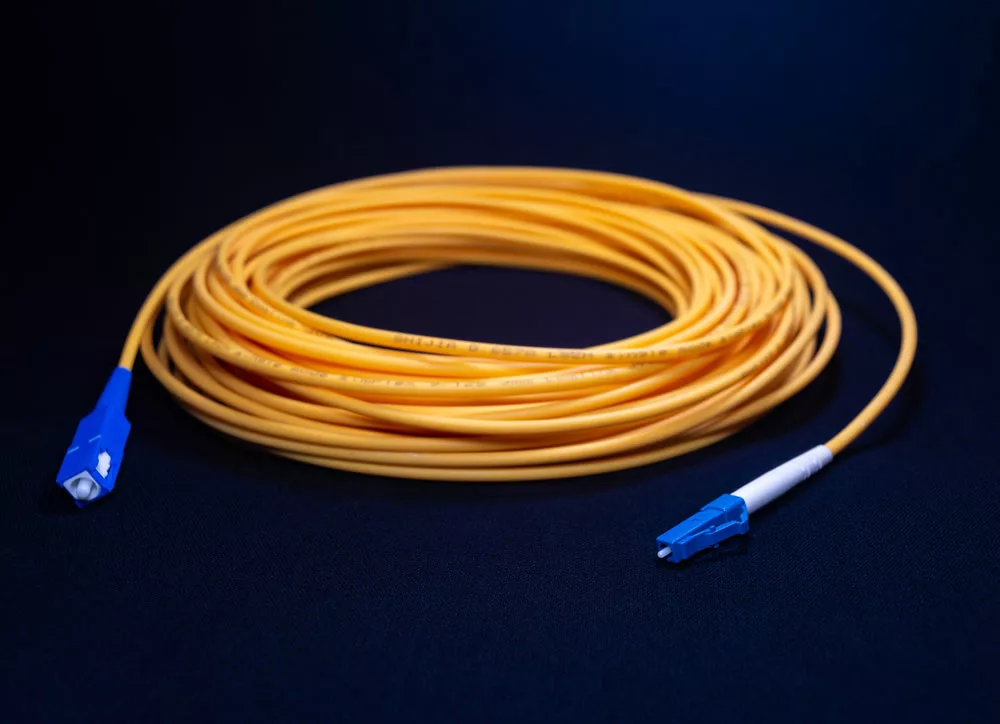
Orange optic fiber patch cord
Unlike a pigtail, a fiber patch cord has the appropriate connectors on both ends. Fiber patch cords connect two fiber devices. Like pigtails, they can have different pigtail wire connectors on both ends.
Below are summarized differences between fiber pigtails and fiber patch cords.
Fiber Pigtail vs. Fiber Patch Cord
| Fiber Pigtail | Fiber Patch Cord |
| Primarily used for splicing on a fiber optic cable | Used for connecting to equipment or other patch cords |
| Usually unjacketed, ready for splicing | Mostly jacketed |
| Has one connector | Can have different connectors, e.g., ST and SC |
| The shorter length of up to 2 meters | Usually longer. Possibly hundreds of meters |
Why Should You Use Factory-Terminated Pigtails?
Fiber pigtail assembly is a sensitive process. Getting factory-terminated pigtails saves you time and money. Also, you’ll be assured of getting better connection accuracy.
Unlike field-terminated pigtails, factory-terminated pigtails are tested at the pigtail assembly grounds. Factories have professional technicians who’ve assembled pigtails, mastering it into a craft.
With factory-terminated pigtails, you’re getting factory prices. Factories have the upside of mass production and working with marginal prices to reduce costs.
Also, you can give the factory a specification list for your project. They’ll provide you with a finished order of custom factory-terminated pigtails. You can proceed with installation without needing termination technicians.
In closing
A lot of modern-day communication needs accurate connections. Fiber optic pigtails and patch cords are central to all communication devices.
Factory-terminated pigtails and patch cords are a cost-effective way to get tested pigtails for splicing.
